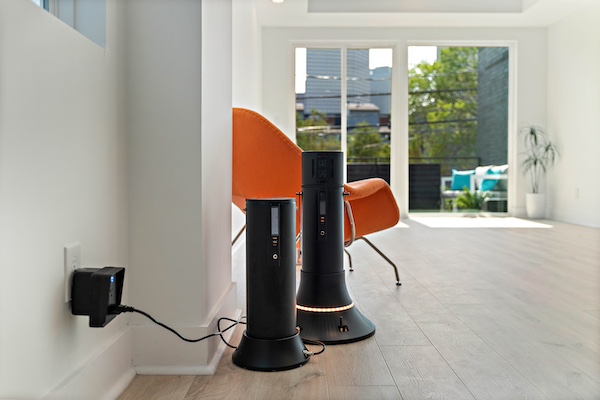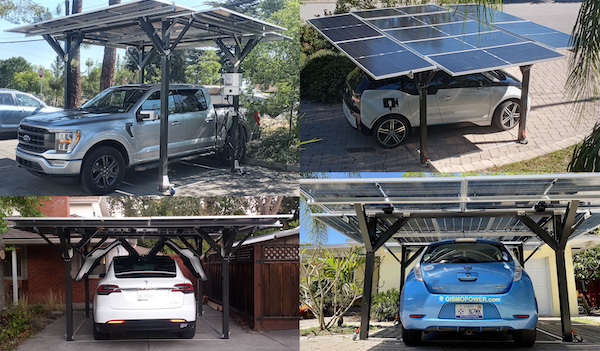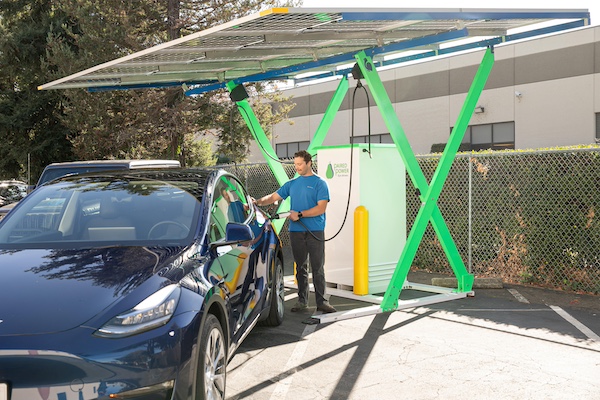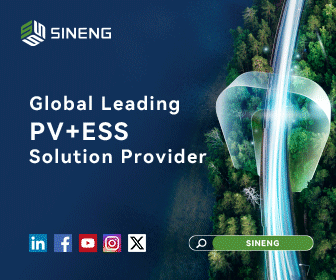The Advent of Plug-In Solar in North America
The concept of Plug-In Photovoltaic (PV) systems, commonly known as "Balcony Solar," has emerged as a game-changing and an increasingly popular deployment method of personal electricity generation in Europe (commonly installed in areas like balconies, gardens, and terraces).

Faced with the long interconnection queues for large solar projects, folks are looking for quicker, more personal solutions. Unlike rooftop installations that often involve contractors and permitting purgatory, Plug-In solar offers a rapid, affordable way to participate in the energy transition, especially for moderate income households.
Despite the lack of precise market data, the demand for Plug-In Solar in Europe is immense, particularly in Germany, a country that accommodated a quadrupling of legally interconnected Plug-In PV systems in 2023.
While the regulations surrounding Plug-In Solar vary across Europe, they generally allow for a significant amount of power to be fed into the grid through standard sockets. In Germany, the limit is typically around 600W-800W. With a dedicated circuit, however, the maximum wattage could theoretically be much higher.
As electricity prices continue to rise, Americans are also seeking ways to become more energy independent and contribute to reducing fossil fuel consumption. Plug-In Solar offers a practical and efficient way to generate personal electricity, contributing positively to the energy transition while lowering electricity bills. Whether utilized by a homeowner, renter, or part of a community, Plug-In Solar presents an accessible solution to embrace renewable energy. The journey of plug-in solar in the United States, on the other hand, is a story of stagnation, marked by anemic milestones and ongoing regulatory challenges, likely spearheaded by fossil fuel interests or vertically integrated electric utility corporations.

With the Department of Energy's 2012 Sunshot Grant initiative, the United States witnessed a pivotal moment in solar innovation, including a $25M grant for “Plug and Play” solar solutions. Despite these efforts, the adoption of Plug-and-Play Solar technologies lagged in North America, hindered by a patchwork of regulations and barriers that currently impede the deployment of Distributed Energy Resources (DERs).
While European countries (notably Germany) have seen a rapid increase in legally interconnected Plug-In Solar systems quadrupling in number as of 2023, the residential solar market shrunk in California, around 70 percent during the same time period.
The market trends were underpinned by energy policies, electric codes, and safety standards that facilitated the connection of small solar generator systems to the grid as easily as a household appliance. Such innovative developments democratized solar energy deployment, making it more accessible to a broader segment of the population.
In contrast, plug in solar in the United States does not yet legally exist, and there are no related codes or standards established yet. Why?
Every state in the nation is contending with regulatory inconsistencies due in part to differing regulations set by local AHJ’s or utilities and the absence of a unified federal law, leaving the U.S. trailing behind in Plug-and-Play Solar adoption.
The good news is, amidst these challenges, the Department of Energy has revived its commitment to developing a new UL-Standard for Plug-In PV systems. This represents a significant step forward, acknowledging the untapped potential for renewable generation, particularly for disadvantaged and underserved communities, those with inadequate roofing for traditional solar panels, and renters.

Advantages of plug-in solar
Plug-In Solar solutions offer numerous advantages, especially for less affluent folks. These systems provide a feasible solution for households that cannot accommodate traditional rooftop solar installations due to structural limitations or property ownership constraints. Renters, who often have limited options for contributing to renewable energy efforts, can benefit from these portable and user-friendly systems.
For those living in dense urban areas or buildings with inadequate roofs, smaller, plug-in solar systems offer a viable alternative to participate in the green energy transition. They can be easily installed in balconies, patios, or small outdoor spaces, requiring no extensive modifications to the existing electrical infrastructure.
These systems also empower individuals to take an active role in their energy consumption, fostering a sense of energy independence and resilience. By reducing reliance on the central grid, Plug-In Solar can alleviate energy burdens in disadvantaged communities, contributing to a more equitable energy landscape.
Meanwhile, larger and more powerful plug-in mobile carports could electrify both a home and charge an EV by means of the same 220V split phase plug used for EV charging.
Joining forces for a sustainable future
If you share our vision of a more sustainable, equitable, and solar-powered future, we encourage you to join this important endeavor. Together, we can harness the sun's power for the betterment of our communities and the planet.
As we embrace the potential of Plug-In Solar, it is crucial to address the existing challenges and pave the way for widespread adoption. This is where collaborative efforts come into play, particularly through working groups focused on advancing solar technologies.
We invite professionals and enthusiasts in the renewable energy sector to join a new working group under the Sustainable Energy Action Committee (SEAC). This group will concentrate on developing solutions to the barriers faced by Plug-In PV technologies, particularly in integrating these systems within the broader energy grid and making them accessible to all community sectors.
Your contribution to a future SEAC Plug-In PV Working Group can be pivotal in shaping a sustainable future. By uniting our expertise and perspectives, we can overcome regulatory hurdles, innovate in solar technology, and ensure that the benefits of renewable energy reach every corner of our society.
As North America continues to navigate its renewable energy journey, the promise of Plug-In Solar stands out as a beacon of hope and innovation. By addressing the regulatory and technical challenges, and fostering collaboration through initiatives like the SEAC working group, we can make solar energy more inclusive and accessible. The path forward may be complex, but with collective effort and determination, a brighter, solar-powered future is within our grasp.
Erika Ginsberg-Klemmt is VP of Operations, and Achim Ginsberg-Klemmt is VP of Engineering for GismoPower LLC. GismoPower’s solar deployment technology can help stabilize the electric grid and reduce the need to upgrade power-lines and transformer infrastructure to manage additional EV related electric loads.
GismoPower LLC | gismopower.com
Author: Erika and Achim Ginsberg-Klemmt
Volume: 2024 March/April












.png?r=7112)
